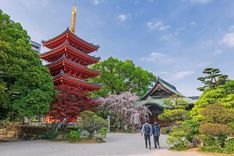- Shiretoko: elemental forces on immersive nature tours
- Shirakami-Sanchi: enriching eco-tours in the Forest of the Gods
- Ogasawara Islands: oceanic adventures and epic hikes
- Do a deep dive into the Bonin Blue sea
- Hike subtropical trails
- Yakushima: outdoor activities in Japan at their most magical
- Amami and the Northern Okinawa Islands: uncover unique traditions in unique landscapes
- Amami Oshima: embrace age-old wisdom through mud-dying workshops
- Tokunoshima: meet salt-of-the-earth artisans on salt-making experiences
- Northern Okinawa: explore untouched nature on a Yanbaru Forest trekking tour
- Iriomote Island: exhilarating nature adventures on land and sea
Across its five UNESCO World Natural Heritage Sites Japan reveals itself as a nation that invites immersion in unique environments and local culture and heritage at every turn. But given the range of activities available across the sites — from eco-tours through a Forest of Gods to trying your hand at traditional mud-dying — fine-tuning your Japan itinerary is no easy feat. So, to help you decide, here we share some of the best cultural and outdoor activities in Japan — enriching tours of World Natural Heritage sites led by passionate local guides who’ll deepen your appreciation of the natural rhythms of their respective destinations, and the cultures that flourish in harmony with the environment.
Shiretoko: elemental forces on immersive nature tours
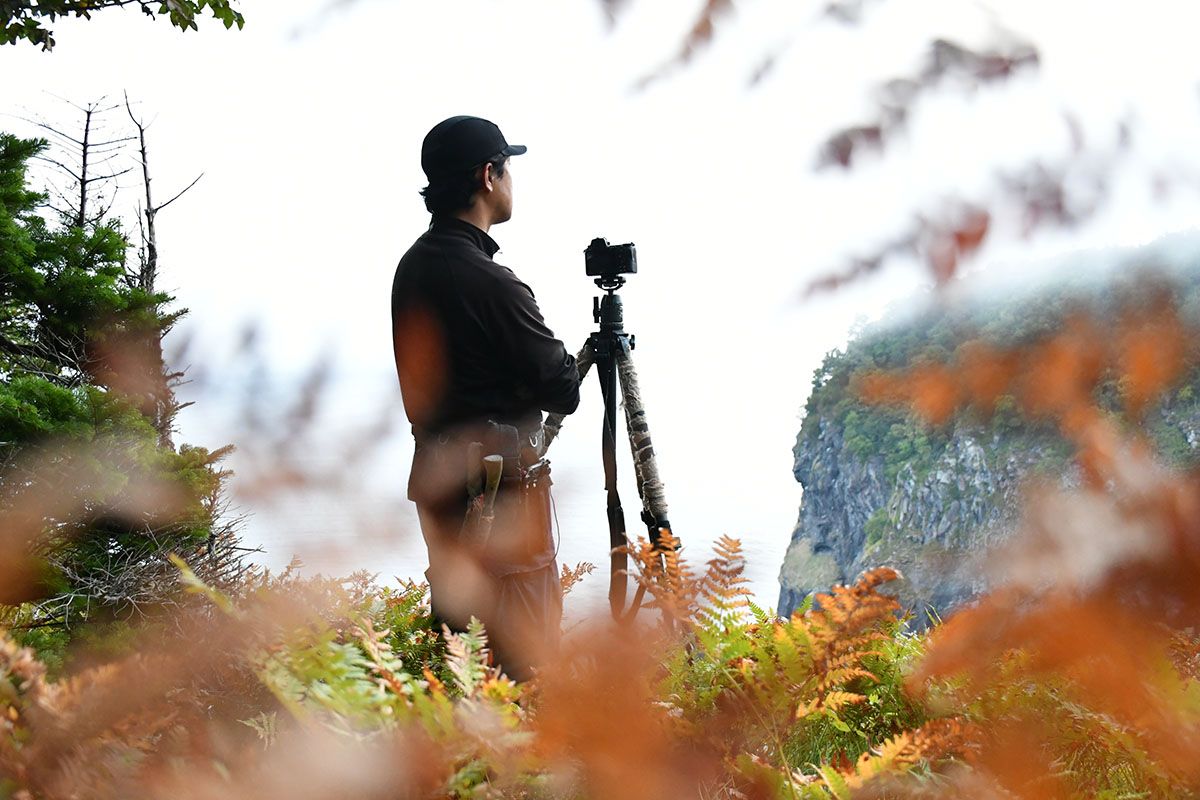
Shiretoko Peninsula
Jutting into the Sea of Okhotsk from the tip of Hokkaido, the slender Shiretoko peninsula is big on natural drama, with expert-led guided tours offering opportunities to enjoy some of the most exhilaratingly scenic outdoor experiences in Japan.
For a few examples, across Shiretoko’s landscapes of pristine lakes, seasonal sea ice and sheer-peaked volcanic mountains, guides take joy from sharing the magic of witnessing whales on sunrise rambles around Whale Observation Hill Park and exploring Shiretoko Goko Lakes.
In essence, up-close elemental majesty abounds on tours of Shiretoko. As local photographer and nature guide Naoya Yagi expresses it, “In Shiretoko, there is little distance between nature and humankind”.
Shirakami-Sanchi: enriching eco-tours in the Forest of the Gods
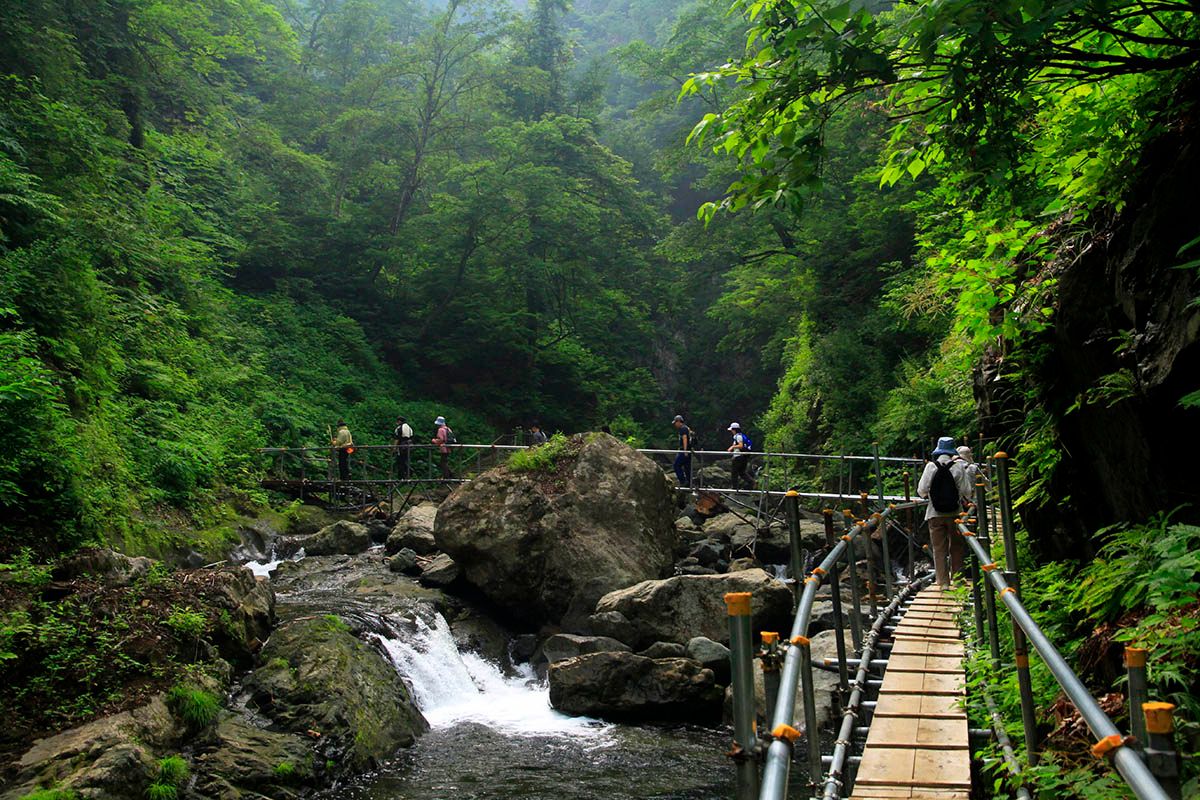
Shirakami-Sanchi
“Those who make their home here in the Shirakami-Sanchi have always lived hand-in-hand with nature”. So shares local conservationist and guide Katsuto Nagai, conjuring the kinds of outdoor experiences that can be enjoyed in this divine area of north-eastern Japan. And we really mean divine — Shirakami-Sanchi’s primeval beech forests have seen it hailed the Forest of the Gods.
A dream destination for hikers who adore meaningful meanders on the wild side, guided eco-tours of Shirakami–Sanchi also unveil local lifestyles that have been shaped by longstanding sustainable practices across its mountains, forests and seas — the area is home to Matagi hunter-gatherers who’ve long lived in harmony with nature.
As a result, nature-focussed eco-tours also offer unparalleled insights into local culture across Shirakami–Sanchi’s mist-shrouded Dakedai Education Forest, three-tiered Anmon-no-Taki Waterfall, and the azure Juniko Lakes, all presided over by Mount Shirakami.
Ogasawara Islands: oceanic adventures and epic hikes
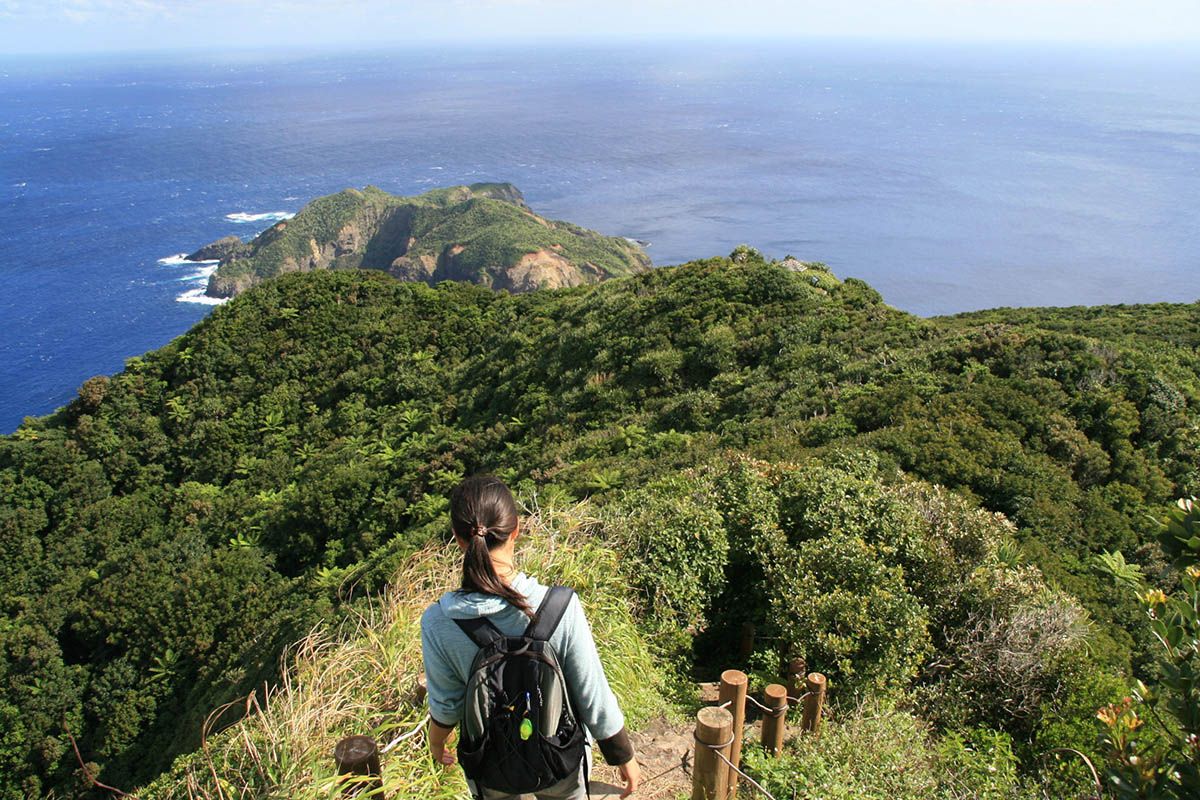
Ogasawara Islands
Reached via a 24-hour ferry from central Tokyo, the Ogasawara Islands are best-known for two extraordinary features. Firstly, a coastline surrounded by the cobalt waters of the Bonin Blue Sea. Secondly, subtropical jungles that give the Galápagos Islands a run for their money in terms of the volume of endemic species they throng with.
All of which means, outdoor activities in Japan don’t come more memorably diverse than around the Ogasawara Islands.
Do a deep dive into the Bonin Blue sea

Swimming with dolphins©️ Ogasawara Village Tourism Bureau
Testifying the infinite allures of the Ogasawara Islands’ waters, veteran dive operator and conservationist Shoubu Yamada notes: “Despite decades of diving in these waters, I still constantly make new discoveries. For me, that's the ultimate charm of Ogasawara’s waters. I can sense for myself that nature is breathing”.
But fear not if you don’t dive — boat tours offer year-round opportunities to see sea turtles and dolphins, with whale-watching excursions operating on a seasonal basis.
Hike subtropical trails
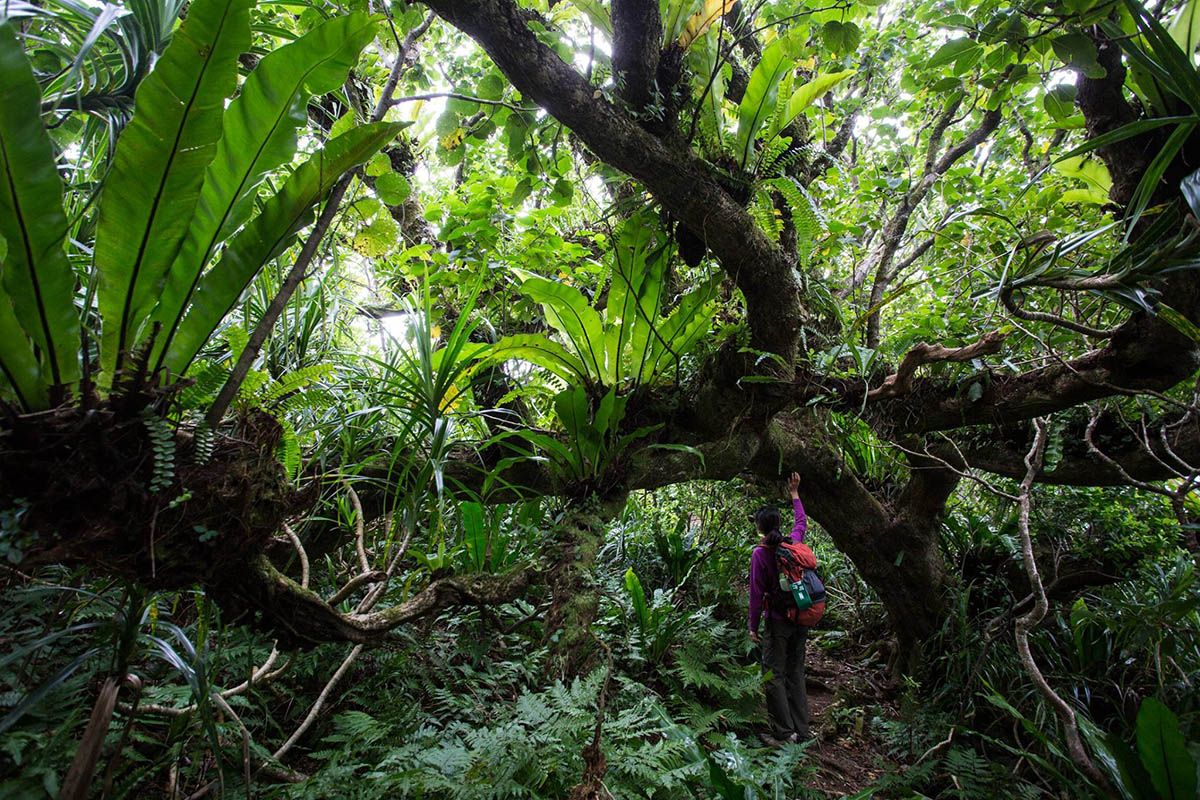
Ogasawara Islands
As a result of their isolation, guided hikes through the Ogasawara Islands’ awe-inspiring forests reveal dozens of species of flora and fauna that are found nowhere else on earth.
For example, tours of the Himetsubaki Valley on Chichijima Island offer opportunities to glimpse rare endemic birds, while hikes to the observation platform on Mount Chuozan will have you witnessing a wealth of wide-fanned Bonin fountain palms.
Meanwhile, over on Hahajima, guided tours of Mount Shokensakiyama see trekkers navigate steep cliffs and tunnels of towering banyan trees on thrilling adventure experiences.
Yakushima: outdoor activities in Japan at their most magical
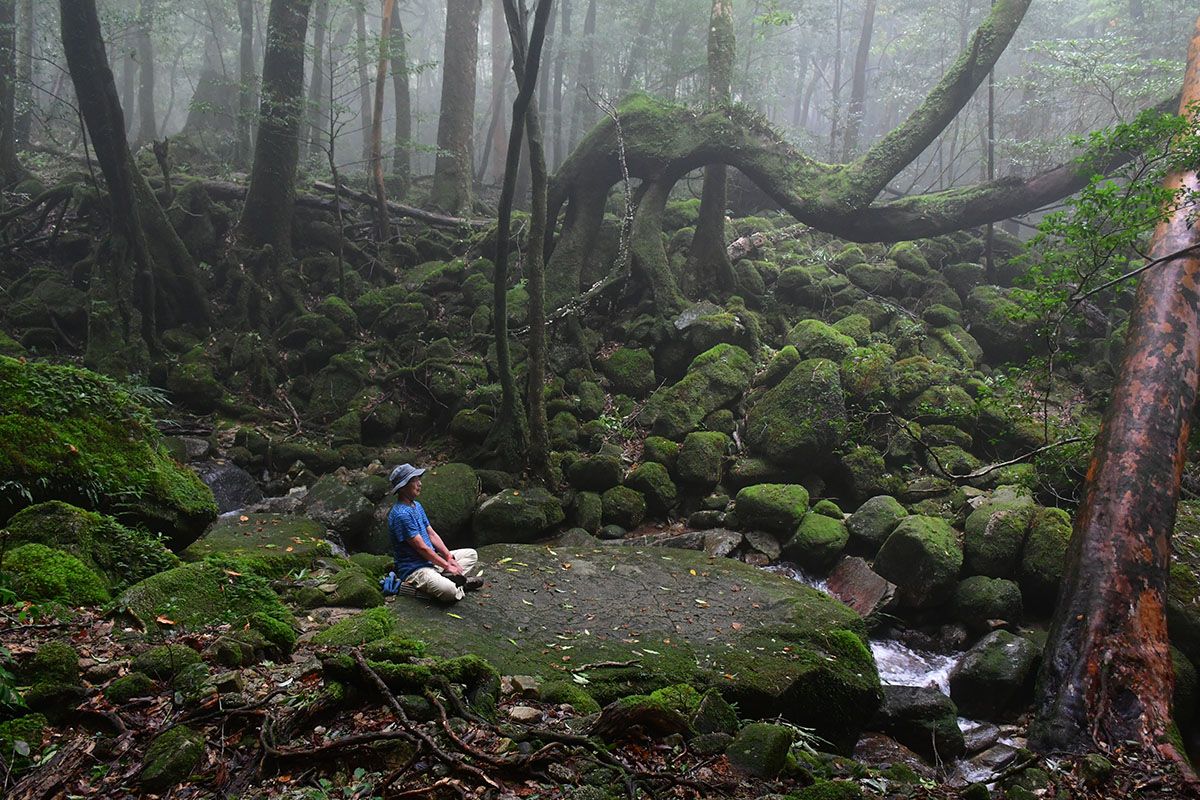
Yakushima
A rain-rich island of fairy-tale forests, Yakushima elevates eco-tourism to incomparably enchanting heights. In the words of nature guide Akio Manatsu, “Every day I’m reminded that the natural environment is also made up of elements invisible to us, and I sense that the question of how humanity can best keep company with nature is something nature is teaching me”.
Chiming with that, nature tours of Yakushima reveal beautifully balanced ecosystems while also showing how humans live in harmony with its otherworldly landscapes. For example, rambles along a former logging railroad reveal how focal points of Yakushima’s once-flourishing timber trade have been returned to nature, with thousand-year-old cedars adding drama to an erstwhile industrial route that’s been transformed into a hiking trail.
While hardcore hikers will want to tackle the 6–7-hour round-trip to the summit of Mount Kuromi, those seeking a more sedate experience could explore winding woodland walkways speckled with shrines, or soak up the sensory magic of Shiratani Unsuikyo Ravine.
Amami and the Northern Okinawa Islands: uncover unique traditions in unique landscapes
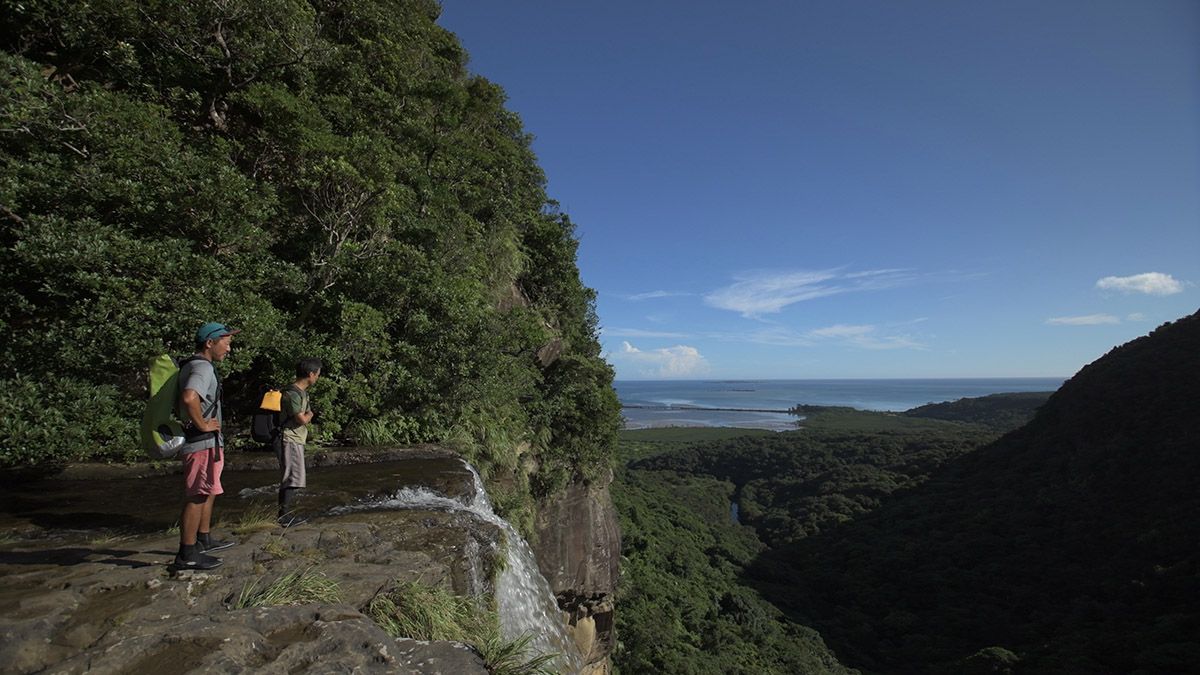
Pinaisara Falls, Iriomote Island
Beyond being one of the most biodiverse areas on Earth, the archipelago that encompasses Amami and the Northern Okinawa Islands are also unique when it comes to cultural traditions. As a result, they offer a range of enriching tours, most notably hands-on workshops that combine culture and nature, as revealed right below.
Amami Oshima: embrace age-old wisdom through mud-dying workshops

Amami Oshima
On Amami Oshima, an ancient mud-dyeing technique found nowhere else in the world continues to be passed down. Joining a mud-dyeing workshop offers an unforgettable and deeply enriching learning experience.
As one of the master craftsmen preserving Amami Oshima’s ancient mud-dyeing techniques, Yukihito Kanai says the craft holds “a vast amount of knowledge about nature.” That wisdom is shared through hands-on workshops where participants experience the traditional process — first chopping and boiling the yeddo hawthorn plant to extract its dye, then soaking threads or cloth in iron-rich mud to trigger a natural chemical reaction that turns them black. By repeating the dyeing and mud-soaking steps several times, artisans achieve the deep, distinctive black hue unique to Amami Oshima.
Essential to the production of Oshima Tsumugi weave, which is widely considered to be among the world’s top three textiles, learning about this technique reveals how exquisite cultural artistry can come from working in harmony with nature.
Tokunoshima: meet salt-of-the-earth artisans on salt-making experiences

Tokunoshima
From collecting tidal pool saltwater, to tucking into tasty dishes born of the island’s bountiful waters, hands-on salt-making experiences in Tokunoshima will satisfy culture vultures and foodies alike.
To extract the salt, sea water is scooped into a big pot before being boiled down on a fire made from kindling, with artisan salt-maker and tour guide Ryutaro Mizumoto sharing detail on a tasty byproduct of following this traditional technique: “There are small fish in the seawater ponds, and when you evaporate the seawater, the fish boil down, which produces something like a dried anchovy stock”.
Northern Okinawa: explore untouched nature on a Yanbaru Forest trekking tour
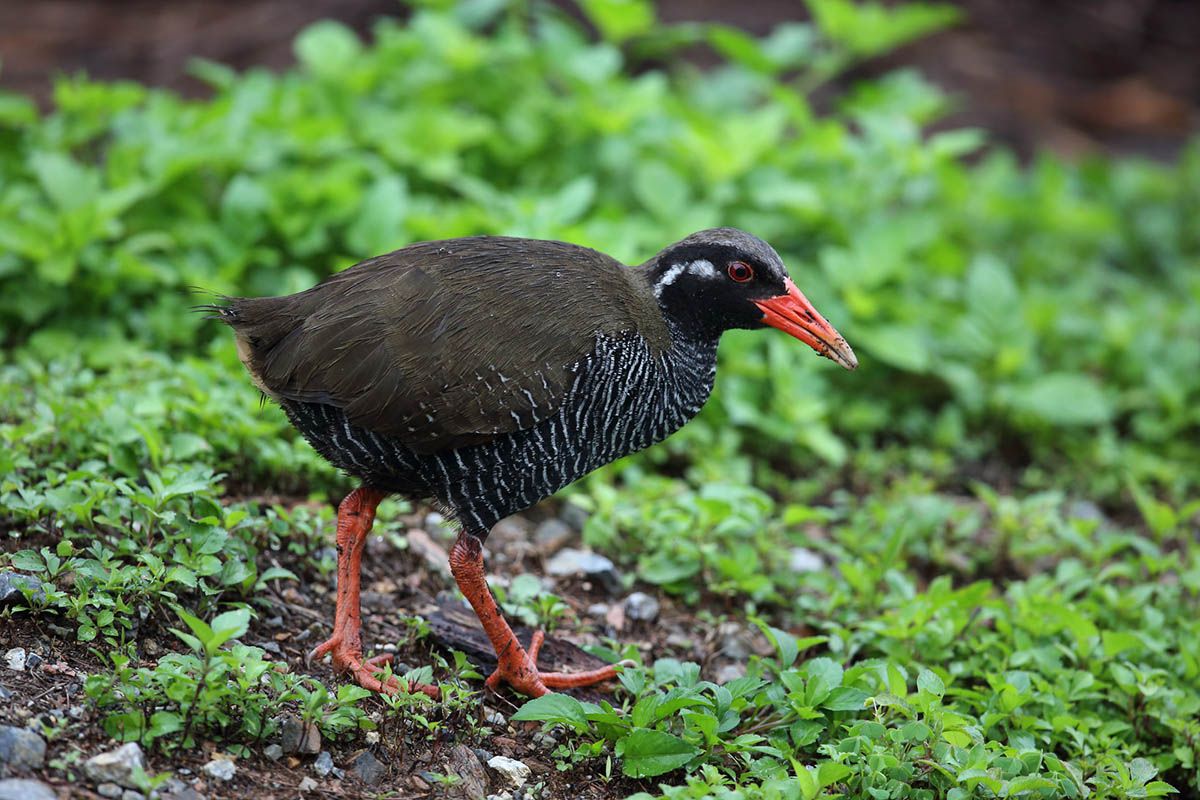
Okinawa rail ©︎ Ishida Koji
A place of pristine mangroves, mountains and forests (the clue’s in its name, which means “a mountainous, forested region”), trekking the trails of Yanbaru Forest affords visitors close encounters with dozens of endemic animals and rare species of plant.
To maximise your chance of seeing said wildlife, and to fully appreciate the area’s unique natural marvels, treks are best done in the company of a local guide, most of whom are also involved in conservation activities.
One such guide is Natsuko Kudaka, who devotes her time to conducting environmental surveys and running an inspirational nature centre, alongside leading tours that share her profound love of the forest: “It’s just amazing to be able to discover interconnections between the life forms in these forests each time I go”.
Iriomote Island: exhilarating nature adventures on land and sea
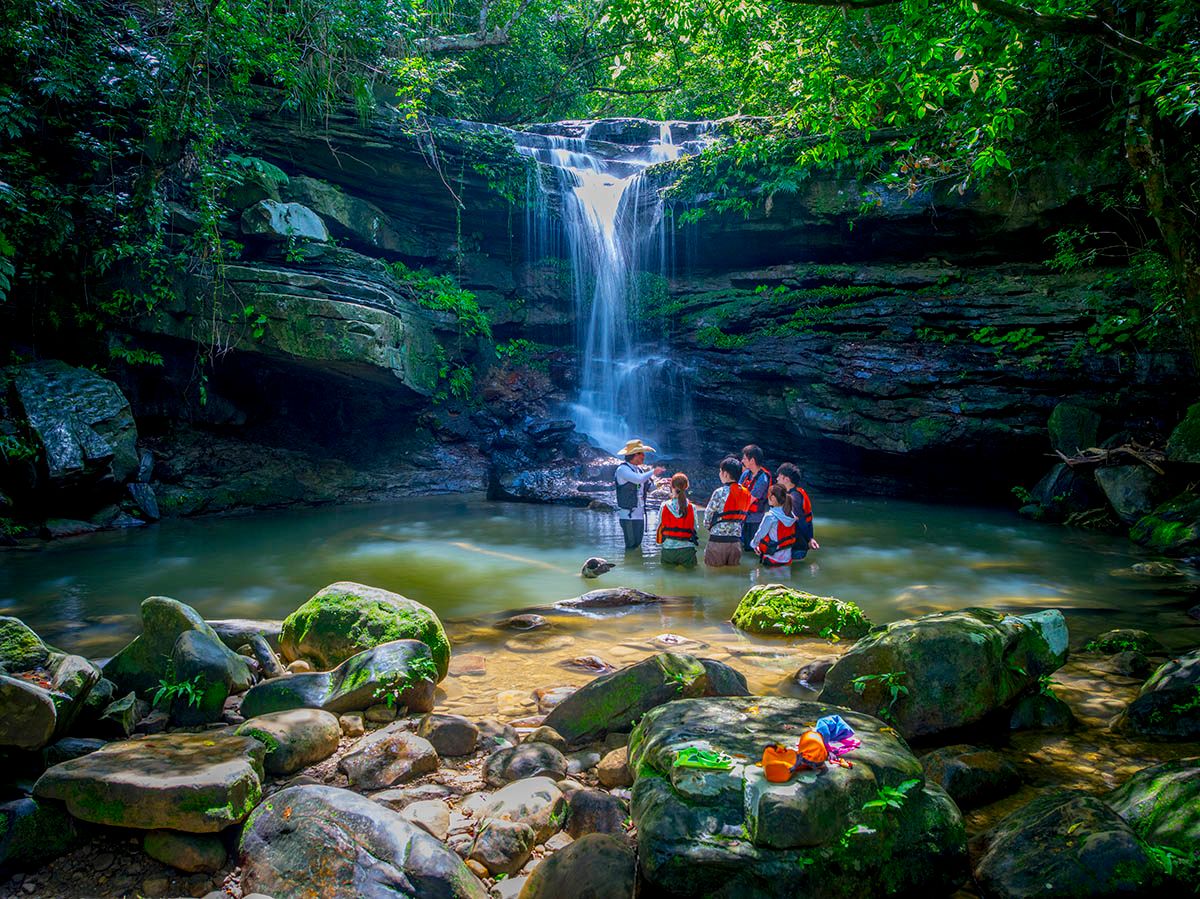
Iriomote Island
Described by local nature guide Takafusa Morimoto as a “treasure island that puts you in touch with animal and plant life”, Iriomote is sliced by rivers, surrounded by marine-life-rich waters, and pretty-much covered in primeval forest.
As such, this dynamic idyll is a hotspot for nature tours of the more active variety — think caving, canyoning, canoeing, and trekking. For an all-round sense of Iriomote’s glorious nature, take a trekking tour to Ge-Ta Falls. After crossing a river and traversing the twisted tree roots of a subtropical forest, you’ll be greeted by the thunder of cascading water before being stopped in your tracks by the three-tiered falls.
Beyond exhilarating land adventures, Iriomote is also an extraordinary destination for divers, with Manta Way, the strait between Iriomote and nearby Kohama, playing host to huge numbers of (you guessed it…) manta rays through spring and summer.
If this run-down of precious experiences to enjoy in Japan’s UNESCO World Natural Heritage Sites has piqued your interest, dive into our overview of each destination, and wise up on their respective wildlife wonders. In all likelihood, you’ll be left longing to include them in your own Japan itinerary.








